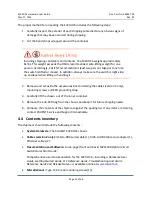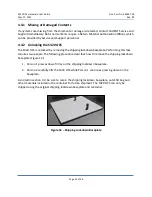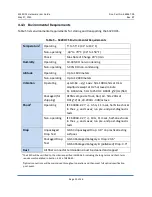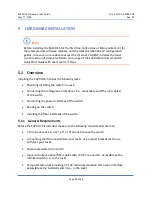
S320 OCS Hardware User Guide
Doc. Part No. 460167-00
May 27, 2015
Rev. B7
Page 19 of 46
3
THE CALIENT S320 OCS SYSTEM
3.1
Overview
CALIENT’s S320 OCS is at the leading edge of fiber-optic cross-connect systems. It provides
transparent, software-controlled fiber-optic switching functionality that will revolutionize the
way optical fiber is installed and managed.
The S320 OCS enables dynamic optical layer optimization in next-generation data centers and
software-defined networks (SDNs). Datacenter operators and service providers can leverage
the system’s high-bandwidth capability and flexibility to stay ahead of the runaway pace of
fiber deployment to make fiber networks more profitable.
The S320 OCS provides carrier-class reliability, making it suitable for Datacenters, Metro
Software-Defined Networks (SDN), FTTx networks and Government deployments. In addition,
the system supports a wide range of network applications—from the network core to access—
allowing any optical input fiber to be connected at the photonic level to any output fiber,
regardless of the data rate or protocol of the signals being carried by the fiber.
3.2
Architecture
The S320 OCS establishes, monitors and changes connections between single-mode optical
fibers using Micro-Electro-Mechanical Systems (MEMS) optical switching. Connections are
made between fibers carrying signals with any wavelength, data rate or protocol. The S320
architecture is shown in Figure 1.
The core of the S320 OCS is the MEMS Switch Module (MSM). Input fibers are connected to the
MSM, which establishes connections with any of the desired output fibers. Light tapped from
the input and output fibers is delivered to the Optical Monitoring Module (OMM) to enable
monitoring of existing connections and establishment and optimization of new connections.
Light is tapped using fiber tap couplers, and mirror drivers control each connection by supplying
voltage to each MEMS mirror. Users manage and communicate with the S320 OCS via the
Control Processor (CP). To ensure high availability, the CPs and power supplies are redundant.
















































